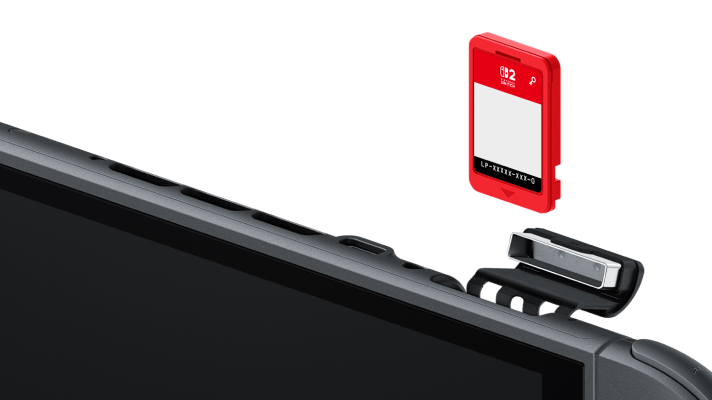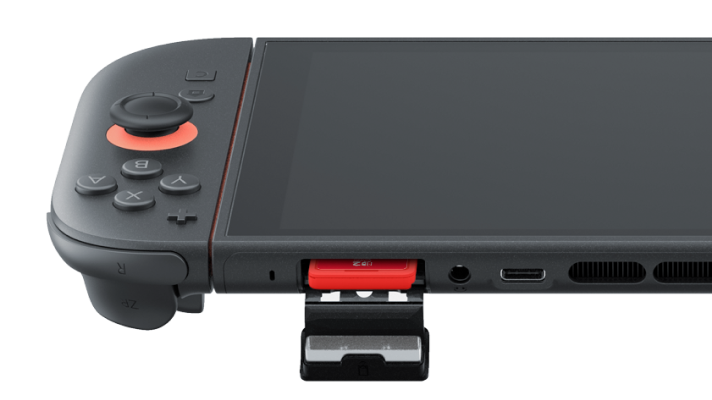

There’s been a lot of discourse online over Game-Key Cards, a new form of physical media that only contains the software license for Nintendo Switch 2.
While I definitely prefer purchasing Game Cards over Game-Key Cards, I think that discourse over Game-Key Cards claiming that Nintendo and third-party publishers are “being greedy” or “trying to force a digital transition” are unfounded.
Let me explain why.


Nintendo Switch 2 comes with a unique set of challenges for physical media. As games are using high quality 4K textures at bigger file sizes, this means that transfer speeds need to be much higher than what they were on Nintendo Switch. This is why the Switch 2 is only compatible with microSD Express cards and not microSD cards – it would take forever to load a Switch 2 game on a microSD card.
To put it in simple terms – a microSD Express card reads data at 600MB/sec to 900MB/sec, whereas for Nintendo Switch, Nintendo recommends microSD Cards with a transfer speed of 60MB/sec to 95MB/sec for better gameplay. We’re talking about a 10x difference.
Generally speaking, transfer speeds on a Switch Game Card should be about the same or higher than that of a microSD card. This means that in order for a Switch 2 Game Card to perform on the same level as a microSD Express card, certain compromises had to be made.
Before the launch of Nintendo Switch 2, there were very few microSD Express options available on the market, and demand was low. In fact, this is the main reason why Nintendo is partnering with SanDisk and Samsung to get microSD Express cards on the market at the same time as the Switch 2 launch – there just aren’t many options available on the market. This is something that never happened with past console launches.
Given that the technology is relatively young, it wouldn’t be hard to imagine it being far harder to achieve economies-of-scale and production capacity for Switch 2 Game Cards that require the same access speeds as microSD Express cards.
Based on evidence we’ve seen from Game-Key Card listings, it is highly likely that only one Switch 2 Game Card size is available – 64GB. The existence of Game-Key Cards with 3GB to 4GB installations show that there isn’t something that exists between a Game-Key Card and 64GB Game Card. If 4GB Game Cards existed at a cost similar to Switch Game Cards, wouldn’t those publishers have opted for them, since Game Cards have higher selling potential and are more convenient for customers?
There have also been rumors suggesting that it costs a third-party publisher USD16 to produce a 64GB Switch 2 Game Card. Currently, a licensed Nintendo 256GB microSD Express Cards retails for USD64.99, and if we were to divide it by 4 to get to 64GB, that’s roughly USD16.25.
This is a hefty price to pay for a Game Card, so it’s not hard to imagine why the vast majority of third-party publishers are opting for Game-Key Cards, which are probably much cheaper and closer to how much Switch Game Cards cost. And that could probably explain why Nintendo is charging more for first party physical releases in almost every region – the hefty cost of production needs to be absorbed somewhere.
This isn’t the first time Nintendo has offered only one size to publishers – during the GameCube era, all games were written to a 1.3GB disc, regardless of how small or large they were. Though it goes without saying that GameCube discs were much cheaper than Switch 2 Game Cards.
Personally speaking, I think it is very unlikely to happen for a couple of reasons.
microSD Express cards are relatively large, coming in between 128GB and 1TB.
Nintendo has probably figured out that it may not make economic sense, or perhaps even technical sense, to produce Game Cards that are smaller than 64GB and larger than 64GB. The file sizes of Switch 2 and Switch 2 Edition games seem to vary widely from 10GB to 100GB, and not many games will be able to take advantage of Game Cards smaller than 10GB.
Considering the high cost of the technology, running multiple production lines, and possibly high defect rates, it may not make financial and technical sense to make smaller sizes.
While some third party AAA games may be able to take advantage of a 128GB Game Card, the fact that a 64GB Switch 2 Game Card possibly costs USD16 would mean that a 128GB Game Card could cost up to USD32, rendering widespread adoption by third-party publishers impossible.
What I think would be more likely to happen is that the cost of a 64GB Game Card goes down over time as Nintendo uses their first party physical releases to produce millions of them, and the same would also apply to microSD Express Cards as Switch 2 adoption picks up. This would make it easier for third-party publishers to consider using them.
Taking into account the points I mentioned, it is clear that third-party publishers are not necessarily being greedy or “cheapening out” with Game-Key Cards. It is not difficult to imagine that Game-Key Cards have a lower selling potential than Game Cards, and publishers should know this – we’ve already seen how Game Cards have sold better than code-in-box releases on Nintendo Switch. The Game-Key Card is clearly a stop-gap solution that many publishers have no choice but are forced to use.
With the high cost and existence of only one Game Card size, Game-Key Cards are a way for publishers to continue to put out physical releases at a cost that’s closer to that of Switch Game Cards. This would also mean that Nintendo doesn’t lose their retail presence, the used games market can continue to thrive, and retailers can continue to make money off software sales.
I would argue that if Nintendo was hell-bent on forcing a full transition to digital, they wouldn’t have come out with the idea of Game-Key Cards. Game-Key Card licenses aren’t tied to any account, something that is important for a full-digital transition as accounts help Nintendo to maintain long-term relationships with customers.
Game-Key Cards in fact show that Nintendo is committed to putting out physical releases far into the future even after Switch 2, and we can only hope that the cost of Switch 2 Game Cards comes down over time to make it feasible for publishers to adopt them.
Dotemu has revealed two new playable characters for Marvel Cosmic Invasion. The new characters are Beta…
The Pokemon Company International has posted a video paying tribute to the late James Carter…
The Pokemon Company has announced a new expansion for Pokemon TCG Pocket. The expansion is…
Chinese social media is buzzing around what could possibly point to the existence of a…
Earlier this month, industry insider and leaker NateTheHate claimed that a Nintendo Direct will take…
Super Mario Party Jamboree Nintendo Switch 2 Edition + Jamboree TV has officially launched in…